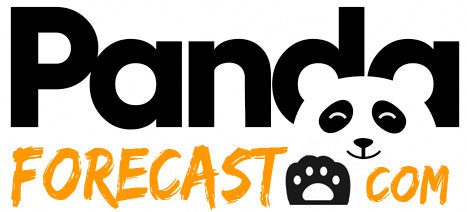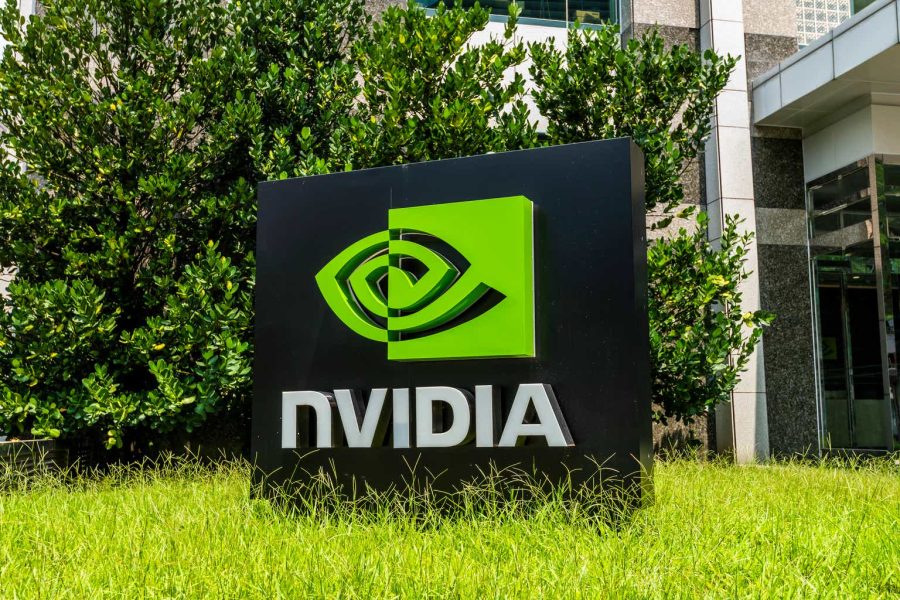July 14, 2024 This Week Top S&P 500 Gainers & Losers
Tesla: Time To Take Profits
Microsoft: The Q4 Results Should Surprise You
Tesla: Optimus And FSD Probably Won’t Save The Day
April 23, 2024 Maximizing Profits: When is the Right Time to Sell Your Business?
April 12, 2024 Improve Your Financial Status: A How-To Guide
April 12, 2024 How ZIM Integrated Container Tracking is Revolutionizing Global Trade
March 15, 2024 6 Best Growth Stocks To Buy Now According to Metatrader 5

Unity Software (U) Stock Forecast for 2024–2028. Sell or Buy?
Updated: July 26, 2024 (20:04)
Sector: TechnologyThe share price of Unity Software Inc. (U) now
50/200 Day Moving Average: $17.87 / $26.9
This figure corresponds to the Average Price over the previous 50/200 days. For Unity Software stocks, the 50-day moving average is the resistance level today.
For Unity Software stocks, the 200-day moving average is the resistance level today.
Are you interested in Unity Software Inc. stocks and want to buy them, or are they already in your portfolio? If yes, then on this page you will find useful information about the dynamics of the Unity Software stock price in 2024, 2025, 2026, 2027, 2028. How much will one Unity Software share be worth in 2024 - 2028?
When should I take profit in Unity Software stock? When should I record a loss on Unity Software stock? What are analysts' forecasts for Unity Software stock? What is the future of Unity Software stock? We forecast Unity Software stock performance using neural networks based on historical data on Unity Software stocks. Also, when forecasting, technical analysis tools are used, world geopolitical and news factors are taken into account.
Unity Software stock prediction results are shown below and presented in the form of graphs, tables and text information, divided into time intervals. (Next month, 2024, 2025, 2026, 2027 and 2028) The final quotes of the instrument at the close of the previous trading day are a signal to adjust the forecasts for Unity Software shares. This happens once a day.
Historical and forecast chart of Unity Software stock
The chart below shows the historical price of Unity Software stock and a prediction chart for the next month. For convenience, prices are divided by color. Forecast prices include: Optimistic Forecast, Pessimistic Forecast, and Weighted Average Best Forecast. Detailed values for the Unity Software stock price can be found in the table below.
Long-term forecasts by years.

Navigating the Turmoil: Predicting Unity Software's Stock (U) Movements

In the complex world of stock investments, future predictions for Unity Software's U stock rates seem clouded by several pivotal factors. Primarily, the company's weak financial performance and guidance stand out as significant indicators. Analysts keen on making the most accurate U stock price predictions are laser-focused on quarterly performance reports and future guidance issued by the company, as these provide direct insights into the company's operational health and strategic direction. The appointment of Matthew Bromberg as the new CEO adds another layer of complexity. His yet-to-be-revealed turnaround plans are eagerly awaited by investors and could either spell a rebound for U stocks or further decline, depending on the strategies he decides to implement.
Strategic Analysis for Investors
Moreover, market perception and sentiment cannot be ignored. Unity Software's stock forecast is also intricately linked to how investors feel about the company's prospects. Being listed as one of the worst performers in the ARK Innovation ETF highlights the current bearish sentiment, something that analysts are watching closely. Understanding these sentiments can be pivotal for an analyst aiming to gauge U stock's potential shifts.
For anyone pondering whether is U a good stock to buy, the U stock buy or sell decision requires a nuanced understanding of these dynamics. The interplay between weak financial performance, leadership changes, and market sentiment forms a comprehensive framework. By integrating these factors into their analysis, analysts and investors can ascertain a more informed U stock price prediction or even pinpoint a reasonable U stock price target. Thus, while Unity Software's path may seem fraught with challenges, informed speculation grounded in these key factors may yet illuminate promising opportunities for those asking themselves, should I buy or sell Unity Software stock?
Review the original Analysis

Unity Software's Roller-Coaster: A Speculative Buy Amidst Uncertain Turnaround?

As investors and analysts look to the horizon for Unity Software (U), several pivotal elements loom that could sharply pivot the U stock forecast. At the core, three significant factors are earmarked to influence the trajectory of U's stock rate in the near term. First and foremost, the reiterated FY2024 guidance by Unity Software emerges as a double-edged sword. It places a high stake on the company's potential growth, challenging the management to turn ambitious targets into tangible results. The success or failure of meeting these metrics could act as a catalyst for either bolstering confidence or triggering skepticism among investors, markedly affecting the U stock price prediction.
Navigating Through Influence Factors
The arrival of a new CEO with a commendable background in the gaming industry throws a spotlight on the company's strategic direction. This change at the helm is not just a reshuffle but potentially a game-changer, positioning the U stock as a good buy for speculative investors banking on a turnaround story. Additionally, the significant plunge in stock prices juxtaposed against relatively low valuations compared to competitors presents a speculative but attractive risk-reward narrative for the adventurous investor.
For analysts intent on making the most accurate U stock price target predictions, these factors act as critical levers. Understanding the intricate balance between renewed management optimism, ambitious financial guidance, and the stock's current undervaluation can provide a robust framework for discerning the likely trajectory of Unity Software's stock. Hence, whether looking to buy or sell Unity Software stock, insight into these dynamics can paint a clearer picture of future performance.
- Reiterated FY2024 Guidance
- New Management Team
- Recent Plunge and Valuations
In sum, while the path for Unity Software remains fraught with uncertainties, the outlined factors offer a beacon for navigating the turbulent waters. For those speculating on the future, these indicators might just spell the difference between an unparalleled opportunity or a cautionary tale in the investment portfolio.
Review the original Analysis

Unity Software's Stock Forecast: A Bumpy Road Ahead?

When it comes to the U stock forecast, analysts are meticulously examining a handful of influential factors that are poised to sway the fate of Unity Software's stock prices in the near term. At the heart of financial discourse, the intense rivalry with AppLovin stands out as a critical point of concern for Unity, potentially affecting its market grip and revenue trajectory. Notably, the challenges confronted in non-core ventures, coupled with the uncertainties that a recent leadership makeover imposes, create a complex landscape for Unity's recovery and growth. Moreover, the uncertainties surrounding the ad monetization strategy add another layer of complexity to predicting U stock price movements.
Dissecting the Influencers on Unity's Stock Valuation
Analysts aiming to nail down the most accurate U stock price prediction are paying close attention to these dynamics. The ongoing competition with AppLovin, which significantly dictates the ad monetization success, stands as a testament to the uphill battle Unity faces. This is amplified by the pressing need to revitalize non-core businesses and realign under a new CEO's vision. By analyzing these factors:
- Intense competition with AppLovin
- Ad monetization uncertainties
- Challenges in non-core businesses
- Leadership transition
analysts can craft a detailed U stock price target, offering investors insights on whether U stock is a buy or sell. Anticipating Unity Software stock forecast requires a nuanced understanding of these interconnected parts, guiding decisions in a landscape marked by uncertainties. As Unity treads this challenging terrain, the question remains: Is U a good stock to buy now, or is catching this falling knife riskier than it appears?
Review the original Analysis
Unity Software, Inc. video game software is developing. It provides software solutions for creating, launching and monetizing interactive 2D and 3D content in real time for mobile phones, tablets, PCs, consoles, augmented and virtual reality devices. The firm operates as a platform for the creation and operation of real-time 3D content (RT3D). Its solutions for games, automotive, transportation and manufacturing, film, animation and cinematography, architecture, engineering and construction, brands and creative agencies, gambling and EdTech sectors. The company was founded by Joachim Ante and David Helgason in 2004 and is headquartered in San Francisco, California.
Unity Software daily forecast for a month
| Date | Target | Pes. | Opt. | Vol., % |
|---|---|---|---|---|
| Jul 28 | 16.05 | 15.83 | 16.28 | 2.88 |
| Jul 29 | 15.86 | 15.67 | 16.25 | 3.68 |
| Jul 30 | 15.45 | 15.09 | 15.93 | 5.53 |
| Jul 31 | 14.98 | 14.80 | 15.26 | 3.08 |
| Aug 01 | 15.06 | 14.87 | 15.32 | 3.00 |
| Aug 02 | 15.21 | 14.99 | 15.36 | 2.44 |
| Aug 03 | 15.49 | 15.10 | 15.70 | 4.02 |
| Aug 04 | 15.67 | 15.25 | 16.07 | 5.38 |
| Aug 05 | 15.95 | 15.76 | 16.20 | 2.75 |
| Aug 06 | 15.67 | 15.38 | 15.92 | 3.51 |
| Aug 07 | 15.15 | 14.89 | 15.52 | 4.19 |
| Aug 08 | 15.31 | 14.95 | 15.46 | 3.40 |
| Aug 09 | 15.24 | 14.91 | 15.48 | 3.80 |
| Aug 10 | 15.24 | 14.76 | 15.73 | 6.57 |
| Aug 11 | 15.58 | 15.40 | 15.94 | 3.48 |
| Aug 12 | 15.62 | 15.49 | 15.79 | 1.94 |
| Aug 13 | 16.08 | 15.67 | 16.56 | 5.71 |
| Aug 14 | 16.06 | 15.59 | 16.42 | 5.32 |
| Aug 15 | 16.22 | 15.75 | 16.48 | 4.65 |
| Aug 16 | 16.17 | 15.93 | 16.63 | 4.38 |
| Aug 17 | 16.33 | 15.90 | 16.71 | 5.14 |
| Aug 18 | 15.79 | 15.40 | 16.15 | 4.84 |
| Aug 19 | 15.92 | 15.52 | 16.18 | 4.22 |
| Aug 20 | 15.99 | 15.48 | 16.15 | 4.30 |
| Aug 21 | 15.88 | 15.44 | 16.25 | 5.31 |
| Aug 22 | 16.45 | 16.28 | 16.77 | 3.03 |
| Aug 23 | 16.41 | 15.90 | 16.86 | 6.03 |
| Aug 24 | 16.31 | 15.82 | 16.80 | 6.23 |
| Aug 25 | 15.97 | 15.60 | 16.35 | 4.83 |
| Aug 26 | 15.74 | 15.34 | 16.01 | 4.39 |
Unity Software Daily Price Targets
Unity Software Stock Forecast 07-28-2024.
Forecast target price for 07-28-2024: $16.05.
Negative dynamics for Unity Software shares will prevail with possible volatility of 2.800%.
Pessimistic target level: 15.83
Optimistic target level: 16.28
Unity Software Stock Forecast 07-29-2024.
Forecast target price for 07-29-2024: $15.86.
Negative dynamics for Unity Software shares will prevail with possible volatility of 3.553%.
Pessimistic target level: 15.67
Optimistic target level: 16.25
Unity Software Stock Forecast 07-30-2024.
Forecast target price for 07-30-2024: $15.45.
Negative dynamics for Unity Software shares will prevail with possible volatility of 5.236%.
Pessimistic target level: 15.09
Optimistic target level: 15.93
Unity Software Stock Forecast 07-31-2024.
Forecast target price for 07-31-2024: $14.98.
Negative dynamics for Unity Software shares will prevail with possible volatility of 2.984%.
Pessimistic target level: 14.80
Optimistic target level: 15.26
Unity Software Stock Forecast 08-01-2024.
Forecast target price for 08-01-2024: $15.06.
Positive dynamics for Unity Software shares will prevail with possible volatility of 2.910%.
Pessimistic target level: 14.87
Optimistic target level: 15.32
Unity Software Stock Forecast 08-02-2024.
Forecast target price for 08-02-2024: $15.21.
Positive dynamics for Unity Software shares will prevail with possible volatility of 2.377%.
Pessimistic target level: 14.99
Optimistic target level: 15.36
U (U) Monthly Stock Prediction for 2024
| Month | Target | Pes. | Opt. | Vol., % |
|---|---|---|---|---|
| Aug. | 15.29 | 14.55 | 16.36 | 11.03 |
| Sep. | 16.62 | 15.32 | 17.85 | 14.15 |
| Oct. | 17.18 | 16.82 | 18.52 | 9.18 |
| Nov. | 16.86 | 15.54 | 17.53 | 11.35 |
| Dec. | 16.33 | 15.75 | 17.56 | 10.33 |
Unity Software forecast for this year
Unity Software Stock Prediction for Aug 2024
An downtrend is forecast for this month with an optimal target price of $15.288. Pessimistic: $14.55. Optimistic: $16.36
Unity Software Stock Prediction for Sep 2024
An uptrend is forecast for this month with an optimal target price of $16.6181. Pessimistic: $15.32. Optimistic: $17.85
Unity Software Stock Prediction for Oct 2024
An uptrend is forecast for this month with an optimal target price of $17.1831. Pessimistic: $16.82. Optimistic: $18.52
Unity Software Stock Prediction for Nov 2024
An downtrend is forecast for this month with an optimal target price of $16.8566. Pessimistic: $15.54. Optimistic: $17.53
Unity Software Stock Prediction for Dec 2024
An downtrend is forecast for this month with an optimal target price of $16.334. Pessimistic: $15.75. Optimistic: $17.56
Unity Software (U) Monthly Stock Prediction for 2025
| Month | Target | Pes. | Opt. | Vol., % |
|---|---|---|---|---|
| Jan | 15.73 | 14.57 | 16.28 | 10.53 |
| Feb | 17.24 | 16.46 | 17.65 | 6.74 |
| Mar | 17.52 | 16.24 | 18.81 | 13.69 |
| Apr | 16.73 | 15.66 | 17.13 | 8.59 |
| May | 15.16 | 14.59 | 15.47 | 5.68 |
| Jun | 14.31 | 13.69 | 15.06 | 9.12 |
| Jul | 13.06 | 12.80 | 13.79 | 7.20 |
| Aug | 12.87 | 12.07 | 13.90 | 13.15 |
| Sep | 12.65 | 11.91 | 13.65 | 12.70 |
| Oct | 12.85 | 12.00 | 13.68 | 12.30 |
| Nov | 13.76 | 12.76 | 14.31 | 10.86 |
| Dec | 14.56 | 13.47 | 15.13 | 10.97 |
Unity Software (U) Monthly Stock Prediction for 2026
| Month | Target | Pes. | Opt. | Vol., % |
|---|---|---|---|---|
| Jan | 14.34 | 13.85 | 14.89 | 6.94 |
| Feb | 15.68 | 14.42 | 16.29 | 11.45 |
| Mar | 14.19 | 13.38 | 15.29 | 12.52 |
| Apr | 14.50 | 14.12 | 14.82 | 4.70 |
| May | 15.21 | 14.13 | 16.23 | 12.93 |
| Jun | 14.71 | 13.62 | 15.57 | 12.56 |
| Jul | 15.12 | 14.53 | 15.80 | 8.04 |
| Aug | 15.90 | 15.03 | 17.03 | 11.76 |
| Sep | 15.67 | 14.60 | 16.39 | 10.90 |
| Oct | 17.22 | 16.60 | 18.08 | 8.19 |
| Nov | 17.44 | 16.08 | 18.66 | 13.83 |
| Dec | 16.85 | 16.39 | 17.88 | 8.29 |
Unity Software (U) Monthly Stock Prediction for 2027
| Month | Target | Pes. | Opt. | Vol., % |
|---|---|---|---|---|
| Jan | 16.19 | 15.19 | 16.69 | 9.02 |
| Feb | 16.77 | 15.58 | 17.70 | 11.94 |
| Mar | 16.69 | 15.82 | 17.76 | 10.90 |
| Apr | 16.31 | 15.59 | 17.24 | 9.56 |
| May | 16.34 | 15.41 | 17.55 | 12.20 |
| Jun | 17.69 | 16.93 | 19.09 | 11.31 |
| Jul | 17.82 | 17.19 | 18.55 | 7.30 |
| Aug | 18.82 | 17.59 | 20.28 | 13.27 |
| Sep | 18.10 | 17.29 | 18.54 | 6.74 |
| Oct | 19.48 | 18.29 | 20.00 | 8.57 |
| Nov | 17.61 | 16.78 | 18.35 | 8.54 |
| Dec | 17.62 | 16.97 | 18.21 | 6.78 |
Unity Software (U) Monthly Stock Prediction for 2028
| Month | Target | Pes. | Opt. | Vol., % |
|---|---|---|---|---|
| Jan | 17.94 | 16.92 | 18.79 | 9.93 |
| Feb | 17.22 | 16.76 | 17.59 | 4.70 |
| Mar | 18.09 | 17.16 | 18.70 | 8.22 |
| Apr | 18.65 | 17.30 | 19.22 | 9.99 |
| May | 19.17 | 18.48 | 19.55 | 5.49 |
| Jun | 18.38 | 17.78 | 19.82 | 10.30 |
| Jul | 18.97 | 17.78 | 20.41 | 12.92 |
| Aug | 18.40 | 17.08 | 18.99 | 10.08 |
| Sep | 19.45 | 18.07 | 20.33 | 11.10 |
| Oct | 20.27 | 19.68 | 21.89 | 10.09 |
| Nov | 18.69 | 18.13 | 19.92 | 9.01 |
| Dec | 19.51 | 18.26 | 20.23 | 9.74 |
Unity Software information and performance
30 - 3RD STREET, SAN FRANCISCO, CA, US
Market capitalization of the Unity Software Inc. is the total market value of all issued shares of a company. It is calculated by the formula multiplying the number of U shares in the company outstanding by the market price of one share.
EBITDA of Unity Software is earnings before interest, income tax and depreciation of assets.
P/E ratio (price to earnings) - shows the ratio between the price of a share and the company's profit
Price/earnings to growth
Dividend Per Share is a financial indicator equal to the ratio of the company's net profit available for distribution to the annual average of ordinary shares.
Dividend yield is a ratio that shows how much a company pays in dividends each year at the stock price.
EPS shows how much of the net profit is accounted for by the common share.
Trailing P/E depends on what has already been done. It uses the current share price and divides it by the total earnings per share for the last 12 months.
Forward P/E uses projections of future earnings instead of final numbers.
Enterprise Value (EV) /Revenue
The EV / EBITDA ratio shows the ratio of the cost (EV) to its profit before tax, interest and amortization (EBITDA).
Number of issued ordinary shares
Number of freely tradable shares
Shares Short Prior Month - the number of shares in short positions in the last month.

















































